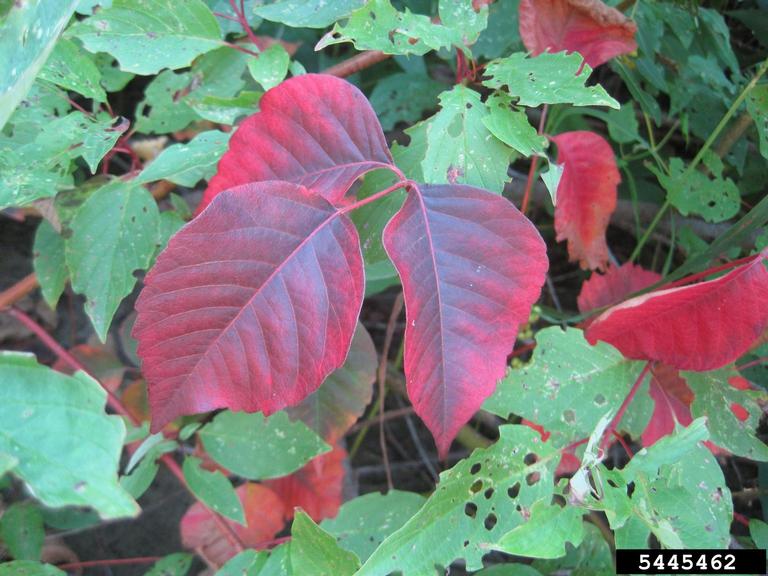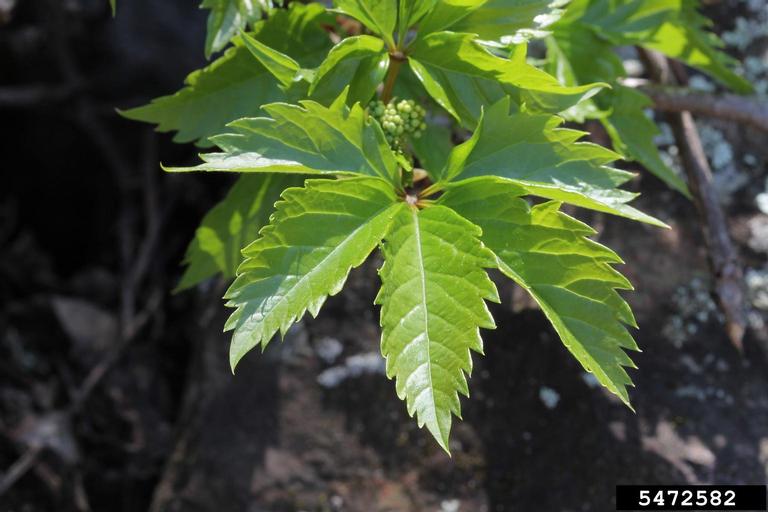Don’t touch! How to identify and manage poison ivy in Christmas tree production – Part 1
Identifying poison ivy (Toxicodendron radicans) early in a Christmas tree rotation can help growers develop an effective control plan.

Poison ivy (Toxicodendron radicans L.) is a prominently allergic plant, which is one of the most common weeds in Christmas tree production. Contrary to popular belief, poison ivy is not an actual member of the Hedera family of ivy plants. Instead, it is a member of the Anacardiaceae family, which also includes cashews and pistachios. Poison ivy is known by several distinct names, including three-leaved ivy, poison creeper, climbing sumac and poison oak.
A fundamental distinction between poison ivy and other plant species is that poison ivy consistently has three leaflets and no more, unlike other plant species whose descriptions are sometimes mistaken for descriptions of poison ivy. The plant also lacks thorns and spines, and its leaves are arranged alternately rather than oppositely. Furthermore, the edges of its leaves lack scallops or fine serrations. These distinguishing features assist in separating poison ivy from other plants that resemble it.
Poison ivy is notorious for creating contact dermatitis, a painful and itchy rash that most people who come into touch with it experience. Urushiol, a liquid component in the sap of the plant that is clear in color, is what causes the rash. For more help in identifying poison ivy, review the following characteristics.
Habitat
Poison ivy is a woody plant that is native to North America and Asia. It has a widespread geographic range from Maine to Florida and westward through Nebraska, Kansas, Oklahoma and Texas. Additionally, it grows in both wet as well as dry environments. Poison ivy grows well in a variety of uncultivated areas, including stream banks, the borders of trails and roads, fencerows and dense woodlands, where there is an abundance of moisture and sufficient light intensity.
Growth habit
Poison ivy can take different forms of growth based on the environment. It might resemble a creeping vine that spreads horizontally on the ground (Photo 1) or grows vertically on other trees via aerial rootlets. Alternatively, poison ivy can also appear as an upright shrub. Its flexibility makes it unique and difficult to identify.
Seedling
The emergence of seedlings begins with the appearance of two cotyledon leaves, followed by the onset of three divided leaves. The cotyledon bears slender, oblong-shaped leaves and are pale green.
Root
Poison ivy most commonly grows as a vine. When in contact with a supportive object, it forms several aerial roots along its stem. These aerial roots firmly adhere to the new surface and proliferate and expand. Poison ivy can expand from the base, extending many yards from the parent plant by with underground growth.
Shoot
Shoots may develop a woody appearance and grow up to 72 inches tall, or they may develop a vine-like growth habit and grow up to 150 feet long, climbing trees, walls and other buildings. Stems have smooth surfaces, and they range in color from light brown to gray. Poison ivy has three-leafed compound leaves, and its leaflets range in length from 2 to 5 inches. While the plant is actively growing, these leaflets are green or yellowish green, followed by turning into red during the fall season (Photo 2). The leaves are alternately arranged on the stem and feature a terminal (end) leaflet with a longer stalk than the lateral (side) leaflets. Leaf shape and arrangement are often the most distinctive identification characteristics of poison ivy.

Flower
Flowers are small and have off-white to orangish centers that bloom in clusters throughout spring.
Fruit and seed
The little, white pumpkin-shaped seeds of poison ivy are known as berries. In spring and summer, these berries possess a green outer skin that becomes pale yellow in the fall. They typically develop on stems in clusters that resemble grapes and are situated just beneath or close to the leaflets. These berries are consumed by several bird species for their outer peel as food, but the seeds remain undigested and are eventually expelled out, dropping to the ground. Birds are an important agent for seed dispersal.
Propagation
Propagation is mainly by seed because of the rate at which those seeds are disseminated by birds and other animals. Poison ivy can grow rapidly and can spread vegetatively via underground rhizomes.
Similar species
Virginia creeper (Parthenocissus quinquefolia) and thicket creeper (P. inserta) (Photo 3) are similar to poison ivy and identification can be difficult. Both species can be differentiated from poison ivy in their leaf arrangement as they possess three leaflets on younger leaves and five leaflets on older leaves. Also, both Virginia creeper and poison ivy use tendrils to clasp trees and other objects, but Virginia creeper differs from poison ivy in that it possesses distinctive adhesive disks on its tendrils.

Virginia creeper and thicket creeper both have reddish-colored leaves in the fall that resemble poison ivy in appearance (Photos 1-2). According to “Poison Ivy in Michigan” by Hill and Tenney, poison ivy produces white berries, whereas Virginia creeper and thicket creeper produce dark purple-black fruits.



 Print
Print Email
Email

